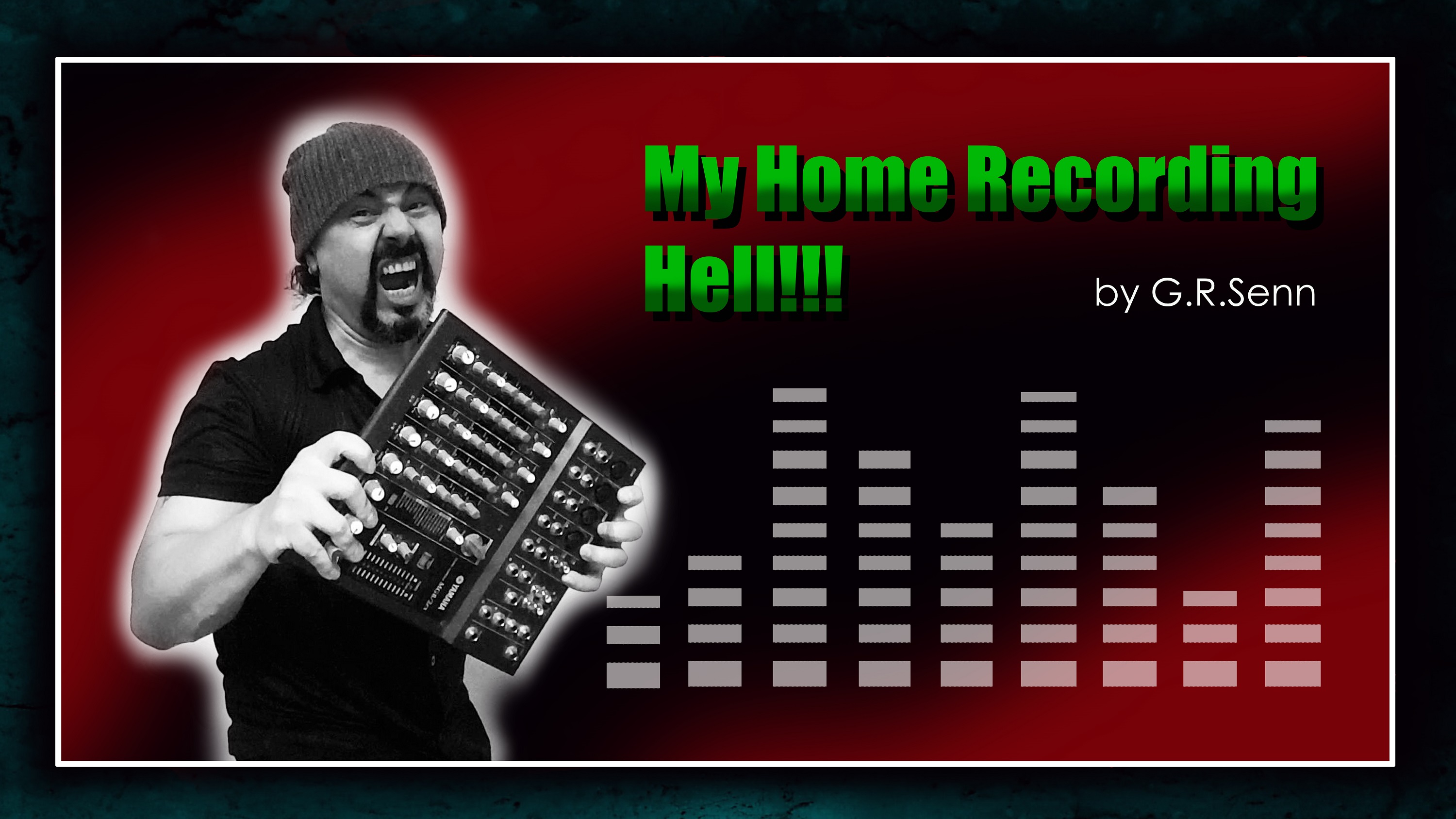
After a long, looong break I've started recording again and taking notes this time. Hey, I'm not a studio wizard or anything like that, however, more often than not, I do come up with quite useful ideas. Below, I'll be sharing those. Enjoy
The Cable Guy, the Killer WAS the Butler After All!
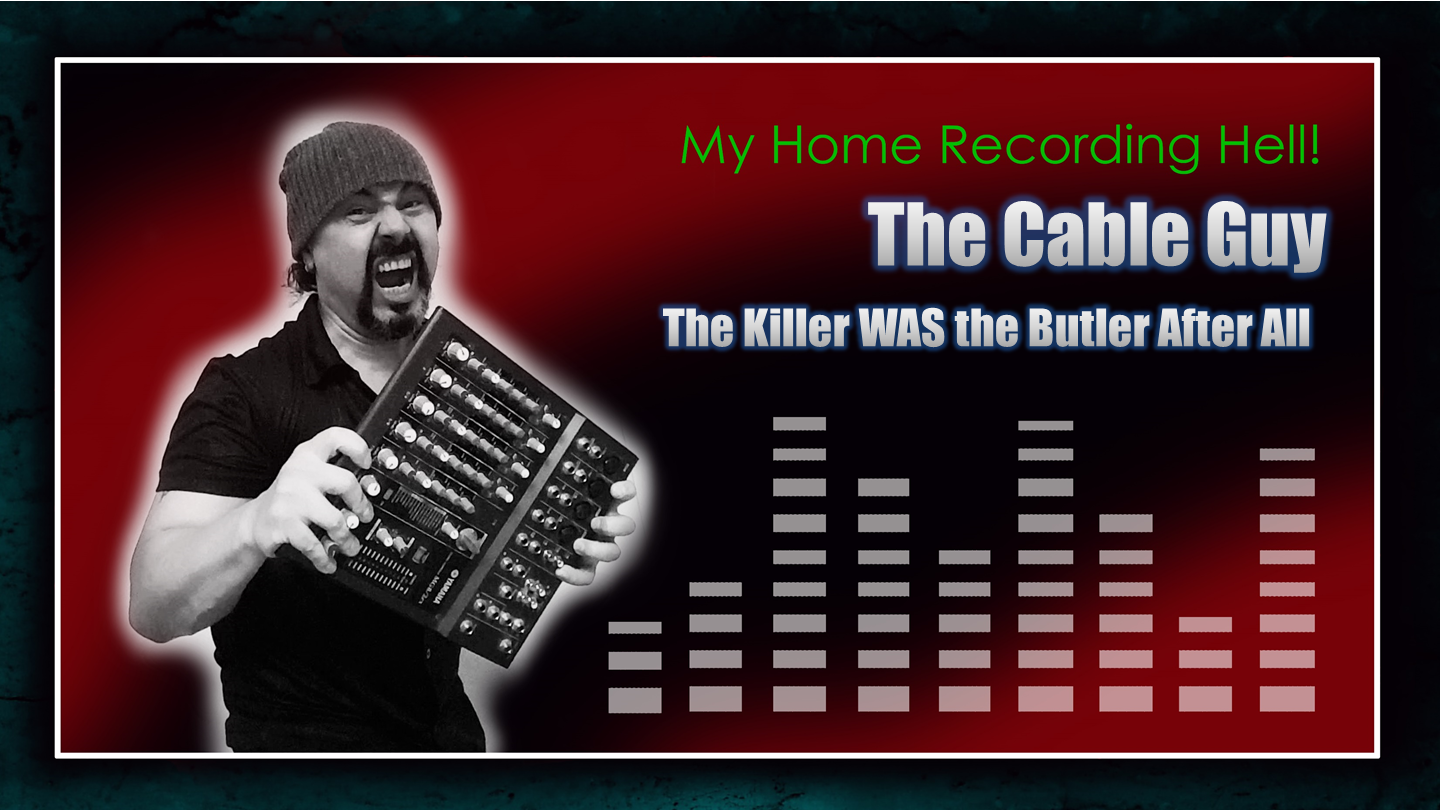
Playing and recording electric guitars, especially distorted tones is nothing but a noise management; at least that’s how I can’t help but feel more often than I would like to. In the days of the past when I got to play live and I used my antique(!) fuzz pedal, I was completely care-free. Drums were loud, I was loud, everyone seemed to be having fun.
I remember the first time that I tried recording some metallic rhythms on my brand new Fostex 4-track, playing my guitar through BOSS Metalizer MZ-2 effect pedal. The result sounded nothing like what I had heard while I I was playing. I didn’t have a noise gate or anything like that; I didn’t even know it existed or what it was for. Then I found out about it but I just didn’t want to pay for one. Because with the same money, I could, and did, buy more exciting tools like a drum machine or a fancy delay/reverb unit that only danced around my sloppy noise pourage. Those toys were great but they couldn’t quite cover my noisy signals. I have to admit though, they made my demos sound somewhat sophisticated. Especially in early 90s, they gave me a grunge-like, contemporary tone. The only problem was that…uh… I wasn’t trying to play grunge or sound like I was from Seattle, regardless of my guitar tone.
Don’t get me wrong I loved Nirvana, Alice in Chains and whomever but what I wanted play was mainly plain rock music; lots of melodic lines and all that. I was into jazz, as well, but it was way out of my reach at the time.
My struggle with noise lasted for years. Even in the digital era. My guitar’s pick ups seemed to be picking up some kind of magnetic wave and sending it straight into my tracks. I managed it to a point by trying to stay as far away from my monitor and whatnot. It helped a bit, so, I thought that was the reason for all the problems, plus, I didn’t have the best quality when it came to gear and it is always a factor, unfortunately.
Then one day, out of the blue, I asked myself, “Wait a minute, wait a damn minute! What if… it was not the guitar, the raggedy switch, the PC monitor or the local FM radio? What if it was my damn cable?” I had a few cables lying around. But they were all the same brand, hence they all sounded the same. I went to a music store and asked for the least noisy cable. I got what I could afford from the bundle that they offered. After the replacement, my first reaction was “S***********ttt!!! Why didn’t I think of this before? Why didn’t anybody tell me?” Suddenly I had less, much less noise in my signal, with or without the computer monitor in front of me. Okay, the noise wasn’t completely gone but now it was in more digestible proportions.
Years went by and I took a long, long break from recording. I forgot about many details. When I made my “big comeback”, I was still using my, supposedly, noise-proof cables, but lo and behold, that old, annoying magnetic noise was determined to join me in my comeback plans.
It feels weird, even while I am writing these lines but for some reason, I had forgotten all about my earlier cable experiences. So, just like I had done years ago, I started looking for the problem elsewhere; besides, even if I COULD’VE remembered what had happened almost a decade ago, about the cables, these were my exact good old cables that I had used forever and had no trouble with. I’d still would’ve skipped the possibility. Look, I am no expert on the subject, but I think it is safe to assume that some deterioration had taken place and those cables weren’t any good anymore.
After a few more months of oblivion, misery and frustration, I suddenly figured what had been staring me in the eye:
The problem could be the cable… again! Yes, it was; the butler WAS the killer. I went through my boxes and found a spare cable that apparently, I hadn’t use before. Tested it and voila! Minimum noise. I didn’t even remember buying it or why I hadn’t used it before. It worked fine, I was happy.
Why do I have such a lousy memory? I don’t know.
What I do know, however, is that one should always check the gear, the strings, the cables, in other words, the usual suspects first. Better yet, just replace them periodically and lose no sleep. I know it is costly and I am one of the laziest people on Earth when it comes to do fixing stuff when it ain’t broke, but in the long run, it all seems to pay off.
Mix on, friends.
G
Clutter Obstacle, the Thorn in Your Side
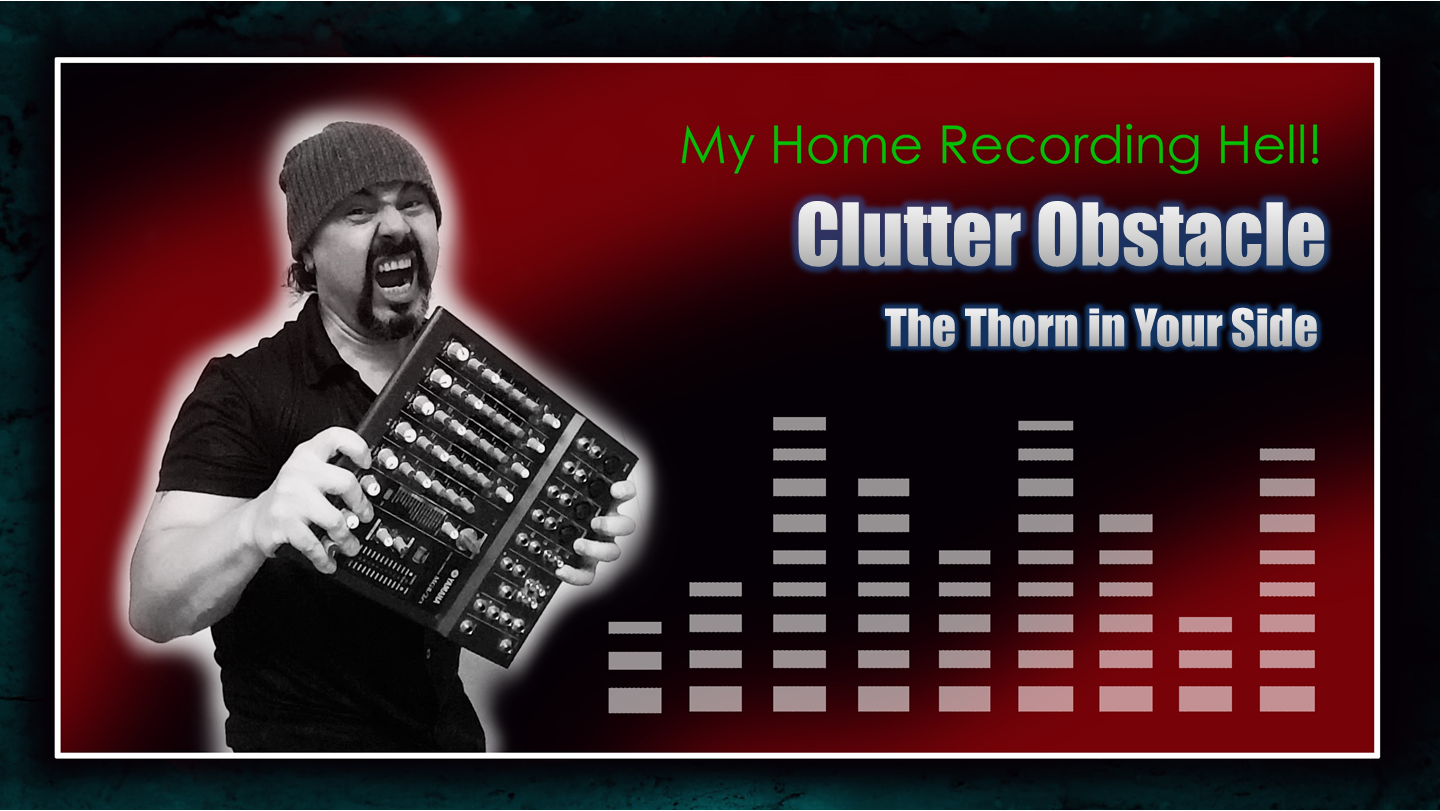
There has been too many times when I had a good idea but I was too lazy to go and turn on all the equipment, plug stuff, adjust the settings, place the microphone, etc.
So, what did I do instead? Nothing! I've ended up doing nothing at all. Add to that "pile of work" the untidiness of my room, my computer desk, in other words, my whole recording area.
Mess and clutter just casts a shadow over my creativity, I just wanna run away. Whereas when I know that my path is clean and all I have to do is get to the performance as soon as the inspiration strikes, I work fast and definitely get things done almost effortlessly, not to mention having a ball all the way and contaminating(!) the result with that joy.
I am not the only one who doesn't like to deal with the boring stuff while the fresh, exciting and rare moments are calling. Even if one doesn't mind all that, it is still safe to assume that they would come up with better recordings just as well as the rest of us, the crazy ones
My reccomendation would be,
Keep your recording area tidy.
Keep your recording equipment set and ready to go by just switching on a few buttons.
Keep the preparation process to a minimum.
Make your bed, so that you can lie when you feel like it.
To me it's all about capturing magic moments, especially with lead instruments and vocal performances. The details, side instruments, the icing on the cake, can be dealt with later, even when you are not that inspired, but your focal tracks must be treated like royalty. Because they are what your listener will pay attention to first and moved by, hopefully.
At the end of the day, a recording is not about perfection, it's about emotions, about what the song stirs up in the listener's heart. It is not an easy task to capture and hold a feeling long enough to connect the right cables, get the right compression and eq settings, find a chair that doesn't squeak, fix the mic-stand, place the pop-filter, dim the lights, light a candle, yell at your neighbor to shut that friggin' dog, so on...
Mix on, friends.
G
All is Fair While Recording
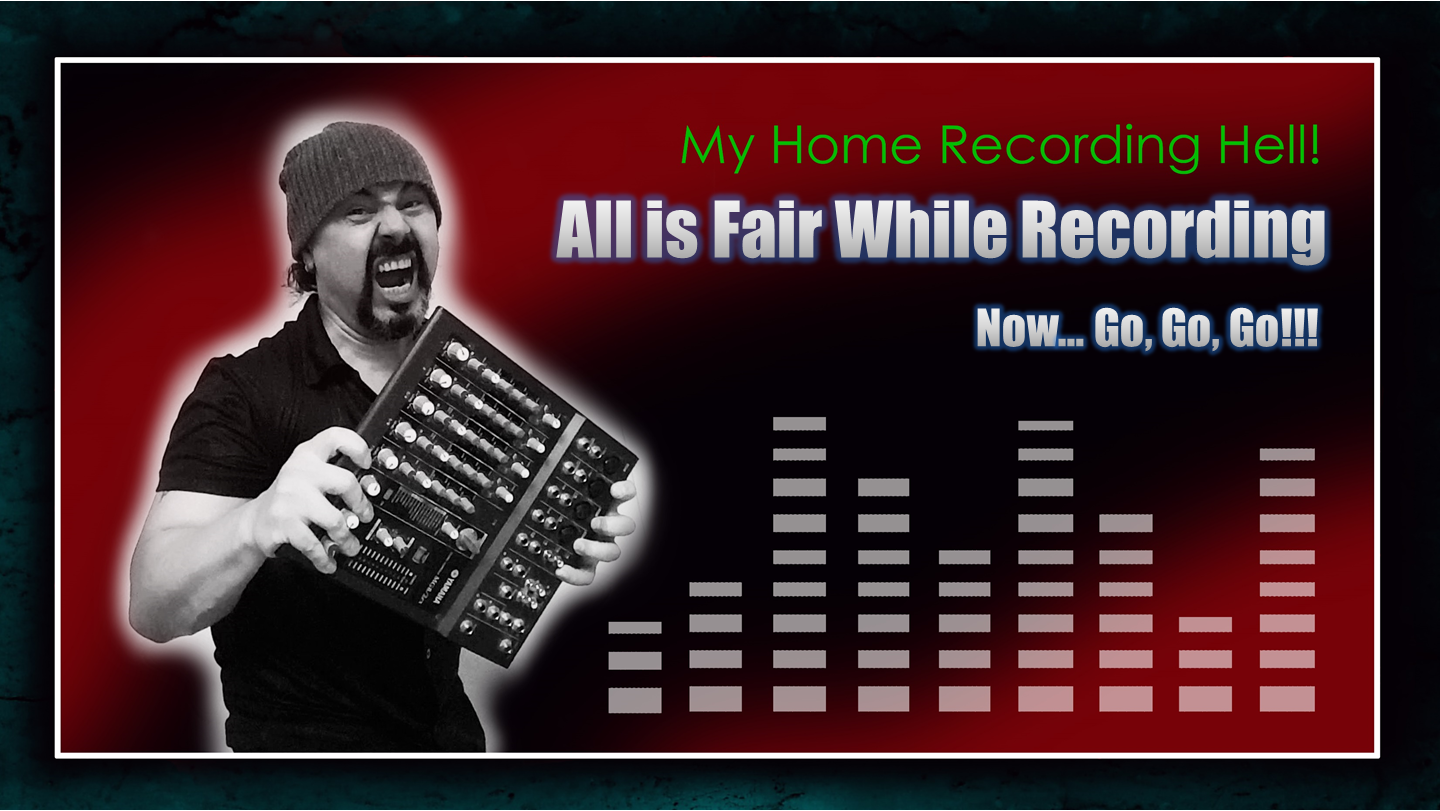
When you're watching a live music video of your favorite guitar player, have you ever noticed the that the way he/she plays, say, a particular solo is not quite the way you imagined it would go? Sometimes not even the tab books get it right, right?
Sure, the notes are the same but the positions, the string choices etc. make you go "huh"?
The reason for that difference is, 9 out of 10, is practicality. When you're playing live, you don't want to complicate things more than you should. Because there are already a million things that can go wrong which you may have to fix on the spot.
When you're recording, all is fair, because the way you put it down will be an entity of forever. That's when you want to put your best foot forward and use all the colors available to you to get the best result possible. As long as the flow and the groove are in tact, the listeners won't care whether or not you had used 10 guitar tracks, 20 different amps in 100 different takes. All is good when it sounds good.
I am definitely guilty of taking advantage of a studio situation anytime possible, especially when it comes to recording guitars. For example, when I play a part, I try to find the best strings and frets on my guitar that will make that particular melody ring better. This may mean starting with my left hand (fingering-hand) near the neck, playing Part A, but suddenly having to jump 5 - 10 steps towards the bridge to play the Part B on the same strings. The fact is, it IS indeed possible to play it that way; I mean technically it is doable. But this forced jump may break the continuity of my playing; depending on how demanding the notes of the melody at hand, of course. If I use the nearer frets and higher strings, now my flow will be unaffected but Part B will, very likely, sound too thin and it won’t be as pleasing to my ears as the earlier version was.
What to do?
This is when I choose punching in and recording Part A and Part B in different takes, on frets and strings that make them sound best and combining them later. It takes a lot of study and practice to play those parts in places on the guitar that I am not used to but once they are down, I have the freedom to forget about them as a momentarily memorized phone number. If I have to play the same part live someday, I would probably choose the earlier version whereby it is easier to play all the parts back to back although the sound may not be as impressive as the recorded one. Besides, during a gig, one can always use variety of pedals like gains, harmonizers, choruses etc. in creative ways to make up for whatever that is lacking.
At the end of the day, these are just my choices and suggestions. But even a lot of big names who could possibly afford to hire a few more musicians to play all those overdubbed parts on their albums, choose simpler approaches in live situations instead. Because the rhythm and the flow are more important than a few weak notes here and there.
To wrap it up,
Be it recording or be it live, don't limit yourself in either situation. Just go for what the moment calls for and make the best of it.
Mix on, friends.
G
Reverse Everything, Chisel Away at Your Rough Mix
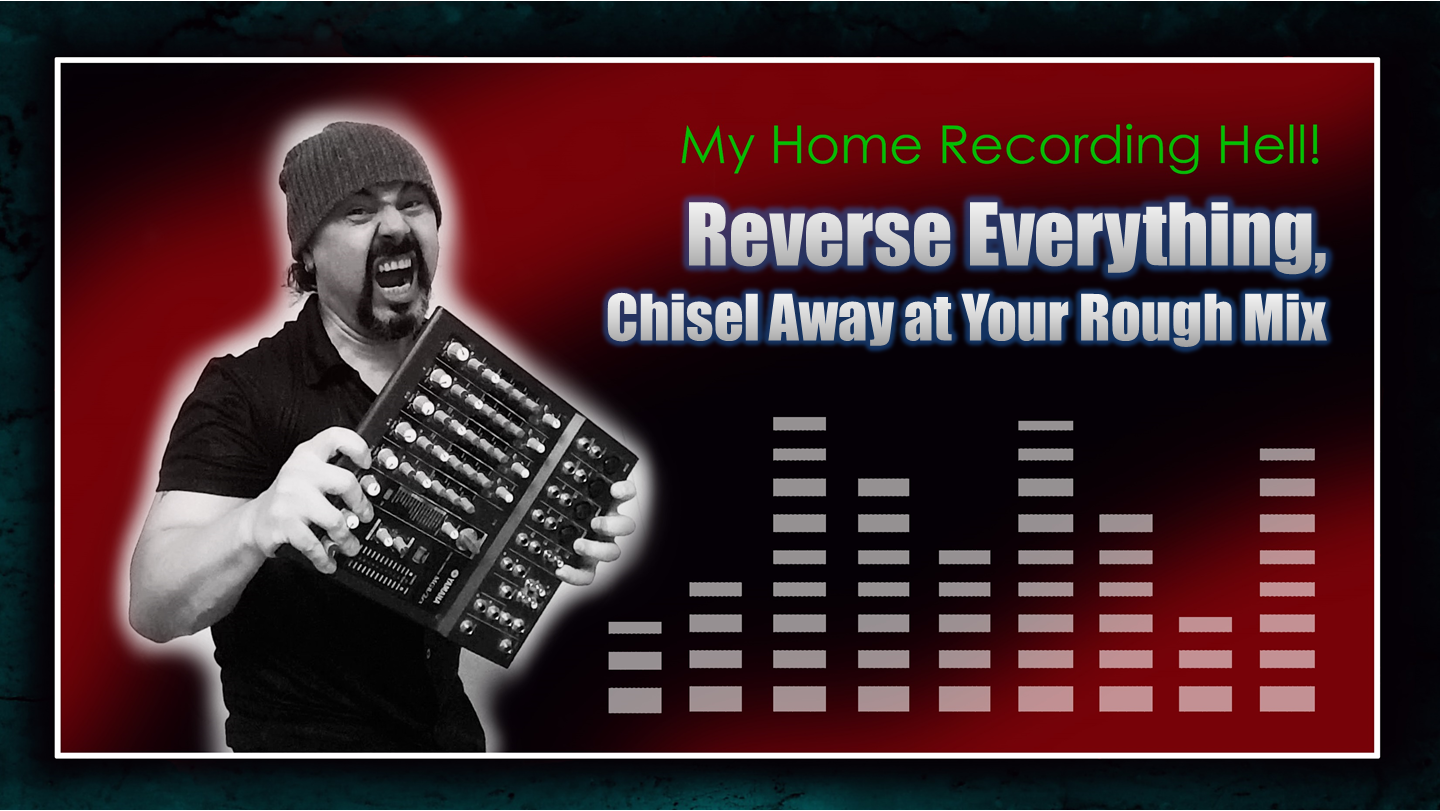
Do I like detail? Do I like tailoring every tiny sound that I happen to have laid down deliberately or by shear accident?
Yes… oh yes!
Does it take forever to finish a mix? Does editing a track always lead to having to fix another? Does each track sound marvelous but making them make sense together is a pain in the ass?
Also… yes oh yes!
I usually start fixing bits and then get to the overall sound but recently I decided to give going the other way around a chance on a project and it seems to work quite well.
What I mean is, in the beginning, I don’t worry about the settings of a guitar track, drums or a bass sub or whatnot. I just play and pile everything together. I don’t touch the EQ or the compressors. I just adjust the gain controls of my recording and then mess with the track levels.
This way I seem to get a fuller richer sound right from the start with some flaws here and there, of course; there is no free lunch after all, right?
Next step is finding out what ARE those flaws. They are necessarily that obvious every time; you know, something isn’t happening at a certain part but you can’t just put your finger on it… yet. Then you decide whether or not you should re-record those parts or small touches of EQ, Compressor, De-Esser, etc. would easily solve your problems.
I think one can liken it to chiseling a clay or something. Pretend that you have a mass that you get to fine tune to create a desired shape, instead of combining little chunks of clay to create a whole big figure.
I' m not saying this is the best approach, per se. But it is AN option. I am very glad that I could put aside my perfectionist point of view and get some pretty good results this way because my last recording took forever and still sounded thinner than I was hoping for; I had to re-start the whole process again but that’s a whole other story that involves computer failures, etc.
Mix on, friends.
G
What’s the Tempo? 138.44 bpm or 140.02 bpm?
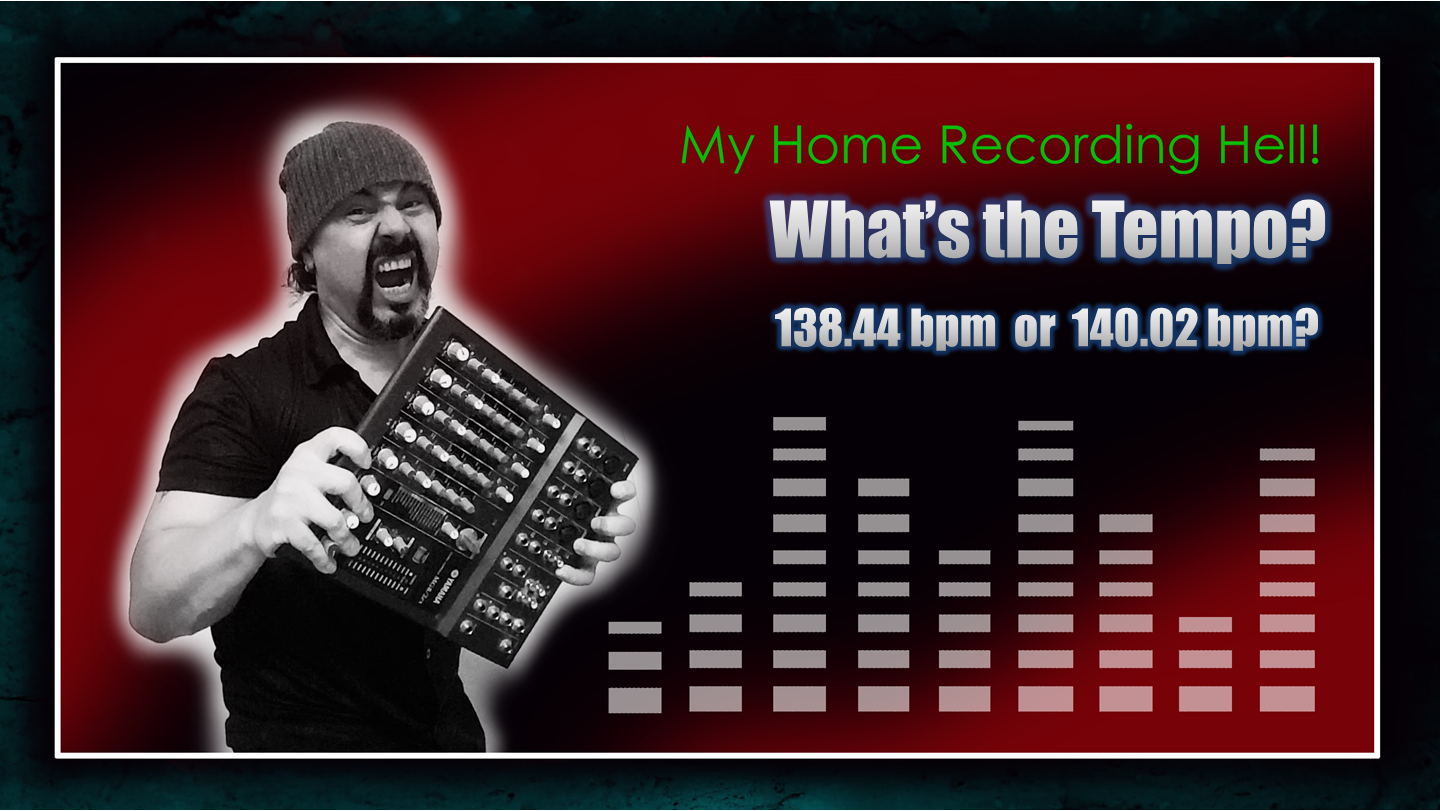
What is your tempo?
What is your PRECISE tempo for that particular song that you’re working on, right now?
Do you know? Do you really know?
When writing a song there is a comfortable speed for each individual musician. This is a generalization of course, but nevertheless, often times a musician tends to stick with similar tempos for certain types of songs. If he/she writes a rocking tune at, say, 140 bpm (beats per minute), the next similar song usually ends up in the same ball park.
When you’re talking about a song with vocal parts, even the slightest changes in tempo would affect the way the words are pronounced tremendously. A guitar player may survive the hardship with a bit of muscle support but a singer would not like to strain his/her voice unnecessarily, especially when he/she is the one who decides what words to use, how loud and how fast to get, etc. It would be a secondary aspect anyway, because a musician would be more likely to be paying attention to the feel of a particular song than anything else and would expect the right tempo to be one of the by products that come naturally.
Live performances would normally take care of the issue by themselves, especially if the band who is playing the tune is a tight one that has the right chemistry. Every musician in it would instinctively adjust his/her speed and phrasing according to the way the others jell into the groove.
Recording could be a whole other game, however. A metronome is a very useful tool when arranging and organizing a song, for adding and removing parts to it later on. But it also tends to bring in some stiffness. The song becomes too perfect, rhythm wise, unlike human beings trying their best to stay steady, a drum machine, or some sort of technological equivalent of it IS the "best" when it comes to steadiness. There are ways to get around that problem and it may take a lot of work but it’s definitely worth the effort in the end.
By the way, in my opinion nothing beats a tight band playing the core of a song from beginning till the end, but that's not my subject I want to talk about today.
So, what is it? The subject… the issue?
A recording enthusiast, like myself, tend to round the numbers up or down when it comes to tempo.
Say, the tempo that the band in the studio plays a particular song is 117 bpm. More often than not we tend to set our metronomes to 120 or 115 bpm; mostly for mathematical reasons by the way. Because it is easier to calculate delay times, attack times, reverb settings, etc.
It might not look like a big deal, and indeed, in many cases, musicians can handle these changes. But I feel like musicians shouldn't be “handling” challenges when recording, at least not the unnecessary ones. They should have all the comfort in the world, to flow easily and go for beyond what is expected; in other words, creating unpredictable magic. Especially when a band has been playing a tune for some time and their inner clock is already set, I don’t think it is a good idea to try fixing what’s not broken.
Having said that all, I am NOT saying that musicians shouldn't experiment with different tempos on a song, especially at the writing stage. Because, as a result, they might end up with a better, even more comfortable rhythm and groove feel, who knows.
One other issue is writing the parts of the song at different times; sometimes by different people with "different inner clocks", no less. This way, say, the verse and the chorus may sound perfect by themselves but when you combine them something would feel awkward.
This can be solved by:
- Finding a tempo in between
- Deciding which part is supposed to be superior to the other (usually that would be the chorus) and setting its tempo as the main tempo.
- Keeping the tempos of those parts different but adjusting it to the point that the awkwardness is gone.
- Last, and the least likely to happen, re-write it and replace the inferior part with a completely different one that flows with the tempo of the superior part.
At the end of the day, these are all nuances and they depend on the ears and individual taste of the music makers and recorders.
Mix on, friends.
G
Every Step You Take
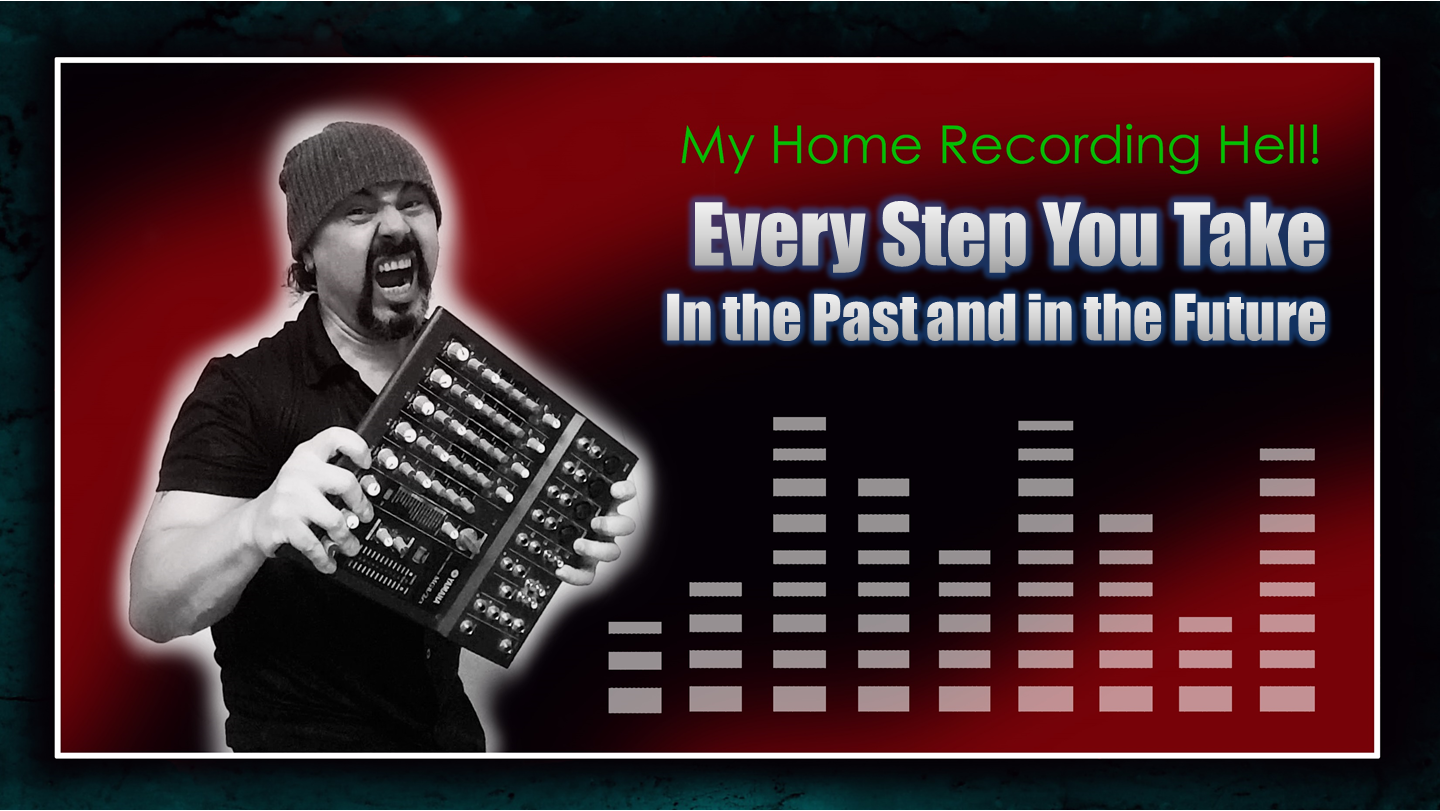
Let’s face it, I don’t have the most capable computer in the world and I don’t have the budget for heavy duty equipment. This forces me to concentrate on getting the most out of whatever I happen to have at hand. One of the difficulties of working with an old computer and a weak hard disc is facing the frequent crashes and latency issues. The computer itself hasn’t crashed per se but the programs I use, like additional plug ins and the DAW can’t seem to handle over certain number of tracks together. They either slow down and make it impossible for me to listen to the combination of my tracks or abruptly shut down, which incidentally only seems to happen at times when I have forgotten to save my current work, hurray!!!
There are ways to go around that.
For example, I record and prepare the parts of a given song separately in different DAW files and then I try combining, preferably, the wav audio tracks of those separate parts in a single DAW file. This is not a very smooth way and comes with a lot of complications in itself but it is, however, much less demanding on my computer.
Recently, I was working on a guitar solo and the backing of it for a song. As I mentioned above, I used a completely different DAW file for the whole solo section.
First, I had the whole thing planned on paper:
The rough solo idea, the counterpoint for it, the harmony and the distribution of it to several tracks, etc.
Then I performed all the parts and programmed the additional percussion and whatnot. The whole thing sounded quite good by itself.
But when I inserted them as individual tracks into the main DAW file, the solo part didn’t quite blend with the rest right away. I did some adjustments, like changing the drum patterns and easing down on the delays for the guitar, etc. and the result was pleasing enough. So, I moved on to the other parts.
After some time, as I was listening to many alternate takes of my song, I realized how much I like the sound and the feel of the original DAW track for the solo. Maybe it wasn’t such a great idea to change it so much to make it sit well with the rest of the tracks such as the following chorus part that came right after the solo. Maybe I should have altered the other tracks a bit to fit the solo part and it should have been a two-way compromise.
But now, I had come such a long way and put down so many different changes and extra bits all over the place many of which worked perfectly. I didn’t want to mess them up trying to conjure the ancient soul of an old part. It was going to be a challenge to go back and figure out the way everything was, what was to be changed, replaced and what was to remain the same. In a scenario like this, the hardest part is to remember what you were doing back then. The thoughts are not fresh any more and if you’re like me, a musician who comes up with 100 ideas a second, goes through endless combinations of trials and errors, who ends up having to choose one out of several very interesting possibilities for every tiny part, extreme frustration or the total break down of your brain functions are not unlikely possibilities.
Luckily, not only do I use a duplicate of the main DAW file to work on each time I turn on my computer but I try to keep a log of what I’m doing at each step in a notebook or on a paper. I number all “the dailies”, meaning the mp3 or wav test files that I listen to in between, to check the results on different sound devices. So, when I’m stuck somewhere and I feel like the previous version of something was better, yet an undo button couldn’t take me back there, since it was 700 takes ago, not to mention in a completely different DAW file, I simply check out my notes or the number on the mp3 file, open the DAW file with that exact number, then either I transferee those track files (MIDI or AUDIO) into the recent DAW file; or if the issue is only about the track settings, the effects plug-ins, I just manually change the settings on the recent file by copying the previous ones.
So far, I talked about writing down what you have done at a session that you have finished to review it in the future. But that’s not all I would recommend you to write down. When you’re doing these make over works, it is also a good idea to write down what you’re GOING to do; I mean each step, however simple it may seem. Because it takes a load of your mind that frees it to do creative work, rather then leg work and unnecessarily get burdened by it.
Even though you may know all the steps of what you’re supposed to do next, the little surprises along the way during a simple process may make you go off the rails and lose your way or they may bring on the stress of having to constantly remember where you are at any given moment and where you have to get back to.
Anyone who has spent some time recording and mixing wouldn’t be a stranger to the “rabbit hole” phenomenon. For example, you sit down to fix some guitar track settings, then before you’re quite done with the guitars, you realize that the the bass is a bit off. You try to fix it but halfway, you mess up the drum part so you leave the bass tracks aside for a while and you start working on drums. While at it, you come up with good fill ideas, you leave your half finished drum patterns and you start adding fills to them; they’re good but the tone of the toms may require some EQing; you start working on those now, eventually, they end up sounding great but now the rest of the drum dynamics are weak compared to those with the tom fills. You decide to redo the whole drum track. As a result, the drum and the guitars are ok together but in addition to the earlier half-finished bass parts, the motif on the fill in bars need adjusting, etc.
Eventually, you get very tired and burnt out. Your mind freezes and it doesn’t let in any more information. It starts giving “System Overload!” warnings.
You ask yourself,
“Where am I? What the hell was I doing?”
Crazy!!!
Where as, in the beginning, all you had to do was shape the rough edges of your guitar track. Instead, now you have a complete mess in your hand and you’re way tired to even go on.
A simple list of steps on a piece of paper or on any device with a word editor can keep your feet firmly on the ground. Even if you get distracted with ideas that may give you fantastic results, you can always find your way back home. If you’re a young musician/mixer you may get away with more adventurous ways but after a certain age, it begins to become harder to focus on things and forcing your mind to constantly remember what was next seriously break your flow; it’s unfortunate but it’s a fact of life.
To cut this loooong story short, I would simply advice you write down your past and future steps and refer to them when needed. If you don’t happen to need them, that’s fine, but at least you will have the comfort of knowing that you have saved yourself from the possibility of a lot of headache.
Mix on, friends.
G